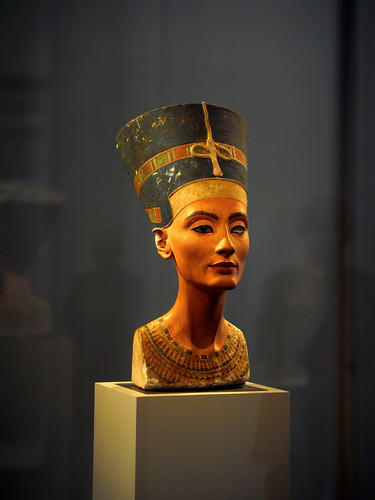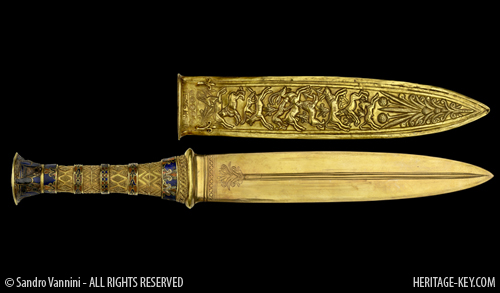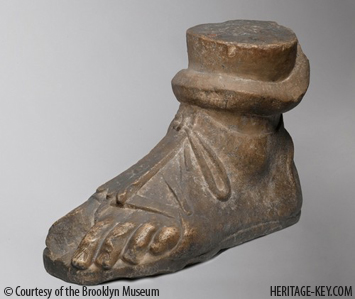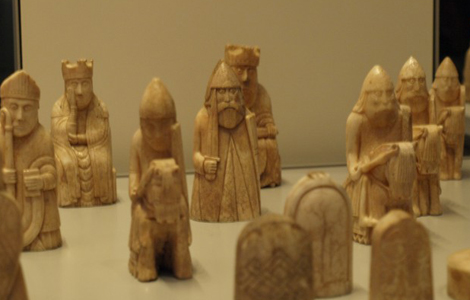London is one of the world’s best cities to see ancient culture. You can ramble round Roman London, see Seti’s sarcophagus at the Soane, explore the hidden pleasures of the Petrie Museum, or get lost in the British Museum, where you’ll see amazing artefacts from all over the world – including the Elgin Marbles, Rosetta Stone and great Mesopotamian relics. But what about the wonders lying just outside the city limits? There are Roman villas dotted all round London, and ancient treasures are never more than a short train journey away. One of the best days out can be had…
-
-
Seti I is thought to have ruled over Egypt for between 11 to 15 years, overseeing the most vibrant artistic period in its dynastic history, and so it is fitting that his tomb was one of the most elaborate and beautifully decorated found in the Valley of the Kings. The well preserved tomb was found in 1817 by Giovanni Battista Belzoni, and is the longest discovered so far, stretching to at least 136 metres. Excavations still continue to this very day at the depth of the tomb as archaeologists seek to uncover the secrets of a mysterious tunnel starting at…
-
Yesterday saw Dr Zahi Hawass, Egypt’s Antiquities chief, travel to Berlin to discuss the future of the Bust of Nefertiti with the director of the Neues Museum, her current home (watch a slideshow about the move). Yet statements released by both parties today appear to disagree on what was to be said at the showdown. The Bust of Nefertiti (or Nofretete in German) has long been in the crosshair of Dr Hawass’ quest to repatriate Egypt’s showcase artefacts. Yet despite her place as one of his ‘famous five’ targets, the Neues Museum insists no formal approach was to be made…
-
Chances are you have never heard of Khirbet ez-Zeiraqoun, also known as Khirbet ez-Zeraqon. Its a 25 hectare fortified town in Northern Jordan that was occupied during a period known as the Early Bronze III (2700 BC -2300 BC). This time period was a high water mark for many great civilizations. The royal burials at Ur, the construction of the Pyramids at Giza and the rise of the twin cities of Mohenjo-Daro and Harappa in the Indus Valley all these things happened in this narrow stretch of time. Khirbet ez-Zeiraqoun was excavated in the 1980s and 90s, and the analysis…
-
Two powerful Bronze Age figures laid to rest with special reverence; two large ritual complexes in places of kingly significance; each in a bend of a river valley; two burials with remarkably well-preserved contents; and two impressive daggers. The quartz-handled dagger of King Tutankhamun is part of probably the most famous treasure hoard excavated from the dry, dusty desert of Egypt by Howard Carter and Lord Carnarvon 87 years ago; the dagger excavated by teams from Glasgow and Aberdeen Universities in Forteviot in August 2009 is still being conserved after being freshly lifted from a cist burial in the rich…
-
A huge granite block, believed to be part of a temple belonging to Egyptian queen Cleopatra, has been lifted from the sea at Alexandria. The nine-tonne stone, quarried in Aswan some 700 miles south of the city, is expected to be transported to a new museum celebrating the sunken city. The block is thought to have been the pillar of a temple to Isis at Cleopatra’s palace. Alexandria became a centre of commerce and education during antiquity, but was razed by a 4th century AD earthquake. The stone is one of a series of underwater discoveries made by the Greek…
-
“The whole discovery of Tutankhamun needed both ingredients to make it work. It wasn’t all Howard Carter, certainly not only Carnarvon. But it needed the two of them.” George Herbert, 8th Earl of Carnarvon, ebbs deeper into the bond which drove two of archaeology’s greatest characters to the biggest discovery of all time. But how did the two men, so different in background and expertise, even forge such a strong relationship? Lord Carnarvon – or to give him his full tongue-twisting title, George Edward Stanhope Molyneux Herbert, 5th Earl of Carnarvon – was an aristocratic explorer and adventurer of the…
-
One of the most intriguing and mysterious ancient sites in Britain is Stonehenge, which continues to this day to captivate and fascinate the public. Standing in solitude in the hills of Wiltshire and pre-dating the pyramids of Egypt, the ‘henge‘ itself was constructed first. A henge is formed in the shape of a circular ditch and bank with a single entrance in the north-east section, but millennia of erosion and weathering means that tourists today may not notice it. However, thanks to GeoEye who have kindly provided Heritage Key with a high resolution map of the Stonehenge area, we can…
-
I dropped my phone last week and it stopped working. As the daughter, sister, and wife of engineers, I generally regard most broken things as a challenge and I am quite often able to fix them, so I gathered tiny screwdrivers and a good light source and prised the handset open. Inside was a world mostly unknown to me, of miniature circuit boards, teeny candy-striped transistors, and delicate little welds. I identified the problem, but it was beyond repair, so I went out and bought another phone with a renewed respect for the intricacies inside the things we use every…
-
In the age of video games, board games might not be the popular pastime they once were. But they have a venerable history. Board games originate thousands of years ago as a spare-time preoccupation of the upper-castes of civilizations from South America to China, Egypt and northern Europe. Each ancient civilization had their own board game of choice. In the Egyptians case it was senet, a complex contest of chance that dating from as long ago as 3500 BC represents the oldest board game in history. The most famous senet board yet discovered comes from the tomb of the legendary…







